This is a sunken garden not far from the Barbican that until recently was a little known space hidden from view by 1970s office blocks.
Today it’s been opened up and made far more public following the London Wall redevelopment.
You will notice the high brick wall running along the side of the park, and that the original Roman Wall, albeit with mostly medieval repairs. The presence of the Roman Wall though tells us something else about this park, it used to be a moat. The outside of the wall was, as was commonplace a deep ditch to make it harder to attack the wall and unsurprisingly considering the English weather, it turned into a moat.
So if you were in this garden around 800 years ago, you’d have been swimming.
The moat filled in and the area developed over time, and by the 1650s, the whole area was lined with buildings, many using the old wall as part of their buildings.
The area saw buildings demolished and rebuilt over the centuries without really changing much, until the 19th century, with most of the area was occupied by the Post Office. More by coincidence than deliberate design, a central courtyard to let light into the offices sat right on top of the current garden.
That building was however utterly destroyed during WW2, leaving it a vacant ruin until a realigned London Wall road was built and offices constructed. One of the new buildings though wasn’t an office, but a modern Livery Hall for the ancient Salters’ Company, and they included a new sunken garden in the 1970s.
The garden was nominally open to the public, but being surrounded by office blocks and the concrete expanse of the old highwalk, it wasn’t that obvious that it even existed, and as access was only via a staircase down from the 2nd floor, not obvious that it was open to the public.
Although the area has seen a massive change with the old post-war blocks demolished in recent years, Salters’ Gardens was left largely alone but opened up considerably by the demolition of the building that used to be where the terraces are today.
Now it’s been opened up on the eastern side, it’s much more obviously a park to visit.
The new stepped terraces also include a winding slope that also finally opens the park up to those who can’t use stairs. The terraces have seating areas, and at the base, a wide water feature.
The older part of the garden was designed by David Hicks in the 1990s to commemorate the Company’s 600th anniversary, and is laid out as a knot garden (a formal geometric pattern), with a fountain and decorative urn next to the Roman Wall.
Standing at the far end of the park, you have an ancient wall on one side, the modernist home of an ancient society on the other, and the strikingly modern offices in front. Along with the restoration of the old church ruins and the marvellous new pedway, the area has seen a dramatic change.
Even during weekends during the early relaxation of the lockdown, the park sitting next to the Barbican was being used by a fair number of people, so what was once hardly visited by anyone is now a popular open park for everyone.

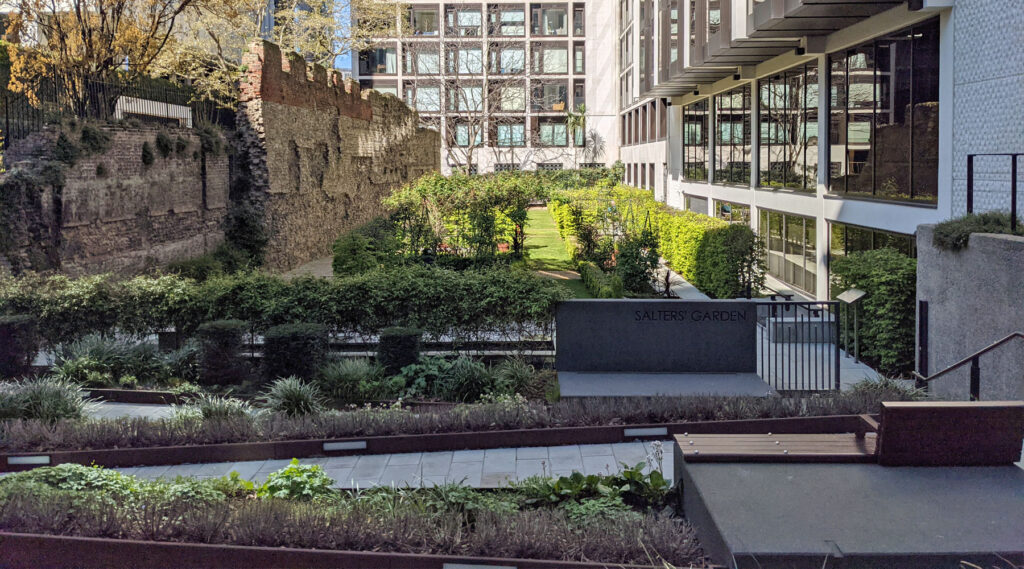
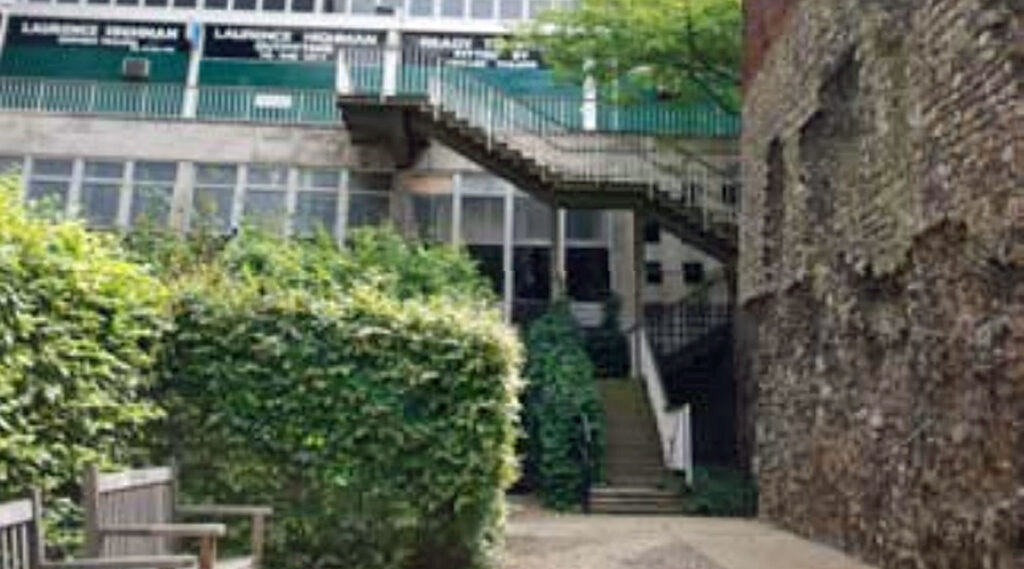
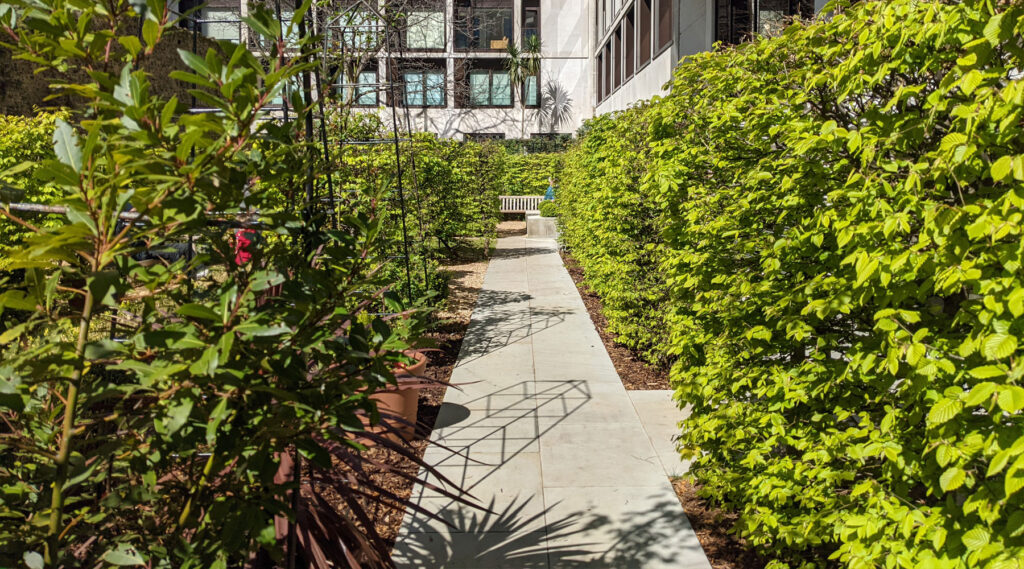
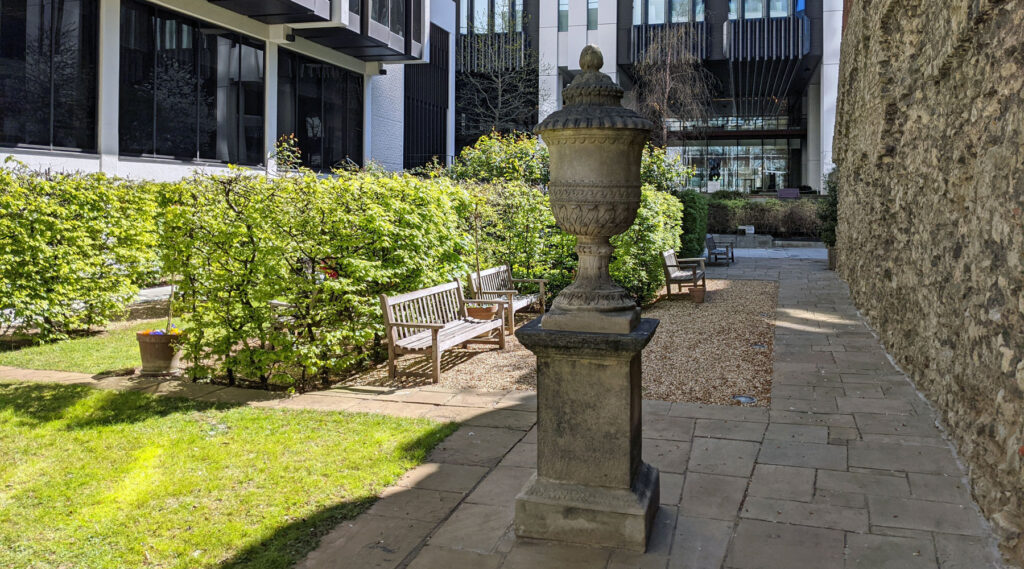
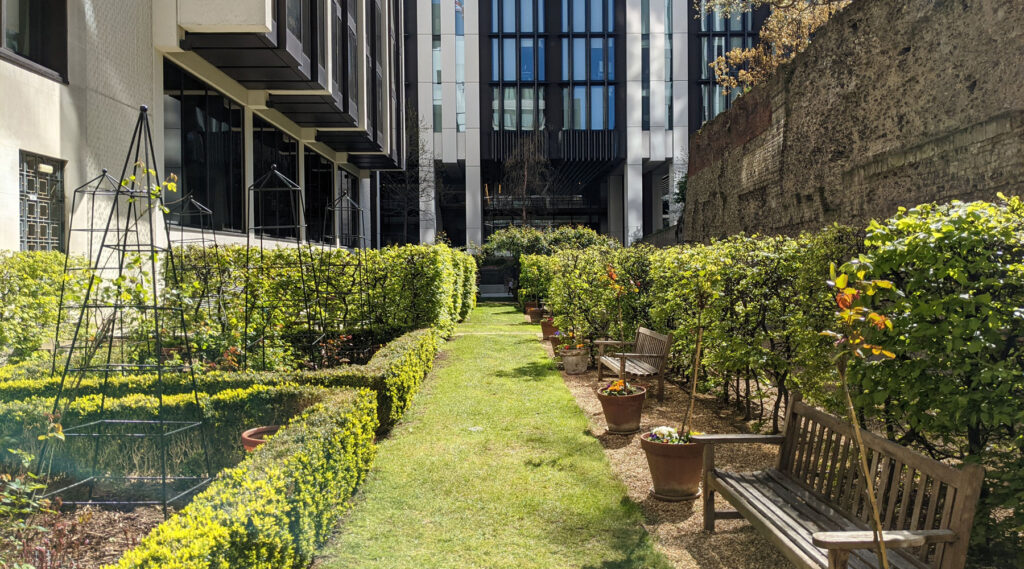






I was trying to understand where this is on Goggle maps. Is part of this site also known as St Alphage Gardens?
It’s not – that’s next to it. There’s a map at the bottom of this article with the location.
Theterraces are on the site of one of the old pieces of podium, i.e. ground floor servicing and first floor pedway and shops; Luarnce Highman Tailors, lastly. I used to like popping down those stairs (no longer there) next to them to the public part of the Salters garden (the private bit was always private). The whole London Wall Place scheme is very good, it must be said, in terms of the way it has cut through that arrangement and added to the gardens.